What is a BioBlitz?A BioBlitz is a short-term event to learn about the biodiversity of an area. In Great Basin National Park, we focus on one specific taxa, either plant or animal, each year over a 2-3 day period. This snapshot view helps us look at many different habitats over the same time period and helps us better understand what lives in the park. Interested in what lives in Great Basin National Park? Come explore your National Park and help ecologists identify both old and new species by participating in our yearly BioBlitz program! 
R. Stringham 2025 Bumblebee BioBlitzFrom June 19-21, 2025, Great Basin partnered with the Xerces Society to study bumblebee populations within the park. Conservation biologist Amy Dolan, coordinator of the Mountain States Bumblebee Atlas project, kicked off the event educating park staff and volunteers on bumblebee ecology and conservation. In the field over the next two windy days, over 380 observations were logged on iNaturalist with surprisingly only four Bombus species positively identified: the Great Basin, White-Shouldered, Yellow, and Hunt bumblebees. Staff and volunteers learned how to safely capture bumblebees and other insects, and how to identify different species by looking closely at the varied color bands on collected specimen abdomens - a gentle, disciplined task! This year's event created even more questions about the status of bumblebees in the park, but greatly contributed to our current knowledge and brought together a great team of insect, nature, and park enthusiasts. 
G. Baker 2023 Hemiptera (True Bug) BioBlitzOver 30 participants plus Baker school attended. Experts delivered six talks on Tuesday afternoon, and attendees could select from five field trips on Wednesday or go out on their own. A huge thank you to the Nevada Department of Agriculture for all their assistance, and especially to Jeff Knight for leading the event. Jeff has been involved since our first BioBlitz 15 years ago! It certainly has been a great partnership. 2022 Forest Health BioBlitzA plethora of Forest Health specialists came to the Park to share their wealth of information about what lives in the forests of the Park, what is attacking them, and what we can do about it. 2021 Reptile BioBlitzDr. Bryan Hamilton, other herpetologists, and park staff led the 2021 Reptile BioBlitz. Participants learned more about snakes and lizards and documented their findings on iNaturalist. One of our main goals is to encourage an appreciation of reptiles all over. 2020 Hemiptera (True Bug) BioBlitzDue to Coronavirus concerns, the 2020 BioBlitz was a mix of collecting at or near home (in the states of Nevada, Utah, and Texas) and in the Park over July 15-17. Over 80 observations were uploaded to iNaturalist and identified by our experts, Cody Holthouse and Amy Springer from Utah State University. Participants were able to do the workshop (2020 BioBlitz Videos) remotely, and we had daily online meetings. 
NPS Photo 2019 Bat BioBlitzFrom August 20-22, 2019, over 60 participants conducted bat surveys at six locations over two nights led by Dr. Bryan Hamilton, wildlife biologist at Great Basin National Park. Through this effort, 821 bats representing 8 species were captured and 7 species were detected acoustically for a total of 9 species documented overall. These species included pallid bat, Western (Townsend's) big-eared bat, big brown bat, hoary bat, silver-haired bat, western small-footed bat, long-eared myotis, long-legged myotis, and Mexican free-tailed bat. The BioBlitz allowed the Park to sample new and multiple areas simultaneously. This gave the Park new insight into the bat activity and landscape use throughout the Park and at varying elevations and habitats. 2018 Beetle (Coleoptera) BioBlitzWe returned to Beetles (Coleoptera) for our tenth annual BioBlitz, held June 12-14, 2018. Jeff Knight, Nevada's State Entomologist led the effort, with assistance from the Nevada Department of Agriculture, Nevada Division of Forestry, Nevada Natural Heritage Program, Bristlecone Audubon Society, US Forest Health Protection Program, Natural History Museum of Los Angels, the Utah Master Naturalist Program from Utah State Univeristy, as well as community scientists from Nevada, Utah, and California. Over 500 specimens were collected, with preliminary identifications adding 65 species to the park list. You can find more on the iNaturalist Project Page and the Preliminary Results Page. 
NPS Photo/G. Baker 2017 Lichen BioBlitzOver 50 participants attended the July 17-19, 2017 BioBlitz focused on lichens. Dr. Bradley Kropp from Utah State University and Dr. Steve Leavitt from Brigham Young University led the effort to explore many habitats, from mountain tops to springs to shrubby lowlands. Hundreds of specimens were collected under scientific permit, adding many to the park's lichen list. Of note were a couple species that were previously known only from the Arctic or Antarctic areas. 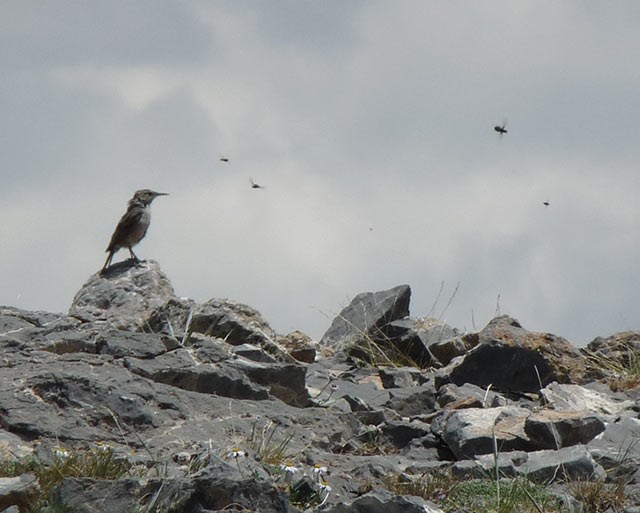
NPS Photo 2016 Birds BioBlitzDr. Elisabeth Ammon from the Great Basin Bird Observatory was joined by over 20 experts and 130 citizen scientists to help document what birds were in Great Basin National Park May 20-22, 2016. A total of 1,843 birds representing 73 species were recorded over the course of the weekend. Mountain Chickadees were the most abundant species recorded. Clark’s Nutcrackers, Pine Siskins, Cassin’s Finches, and American Robins were also very common. In addition to many guided bird walks to various areas of the park, the BioBlitz also featured an afternoon of great talks and demonstrations, art workshops, and more. 2015 Stream Insects BioBlitzDr. Boris Kondratieff from Colorado State University served as the lead entomologist, with assistance from Dr. Riley Nelson of Brigham Young University. Dave Ruiter, the leading expert on caddisflies in the American West also attended, as well as the Nevada State Entomologist and his crew. Citizen scientists from several states participated in the event, and in total more than 35 people spent over 500 hours helping find and identify stream insects in the park. Over 2,400 specimens were collected during the BioBlitz. Preliminary results indicate that the amount of diversity in the park is strong, and many species already have been added to the park list. 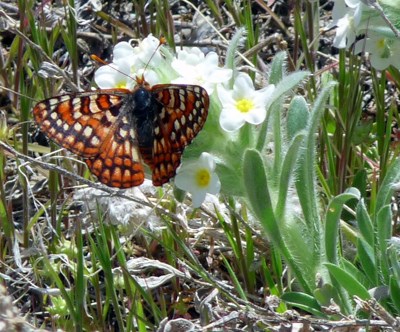
NPS Photo 2014 Lepidoptera BioBlitz (Butterflies and Moths)Under the guidance of Dr. Paul Opler and his crew of lepidopterists, over 50 citizen scientists helped find more than 40 butterfly species and over 300 moth species during the July 13-15 BioBlitz. Several moth species may be new to science. In addition, everyone had a chance to witness the blizzard of adult army worm moths (Euxoa auxilliaris), which were present in millions. 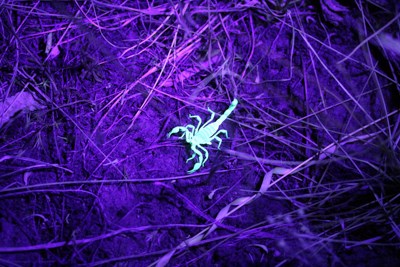
NPS Photo 2013 Arachnid BioBlitzFrom July 8 to July 10, 2013, over sixty participants searched for arachnids in Great Basin National Park in order to greatly expand the park's limited documentation of arachnids. Dr. Paula Cushing from the Denver Museum of Nature and Science led the Arachnid BioBlitz, presenting a workshop and coordinating collecting activities. Under the dark skies of a new moon, volunteers used black lights to search for scorpions, spotted the eyeshine of wolf spiders, and found solfugids lurking near lights at the visitor center. During daylight hours, some volunteers searched along streams, in grassy meadows, and under logs in thick forests. Others climbed mountains to catch spiders. At the end of the event, the Great Basin National Park Foundation sponsored the closing lunch and the Western National Parks Association provided raffle prizes. During the successful three-day event, two orders were added to the park list: scorpions and solfugids. In addition, several spider and pseudoscorpion families and genera were added. Further identification in the lab will likely more than double the known arachnid families in the park and increase the known species at least tenfold. 2012 Diptera BioBlitz (Flies)Great Basin National Park held its fourth annual BioBlitz June 19-21, 2012, concentrating on Diptera (flies). During a 48-hour collecting period, over 50 participants collected thousands of flies. Dr. Riley Nelson from Brigham Young University led the BioBlitz, supported by the Nevada State entomologist and his team. In addition, volunteers from Nevada, Utah, California, Colorado, Washington, Arizona, and even as far as Oman and Germany came to the event. Additional support came from the Great Basin National Park Foundation and the Western National Parks Association. Participants collected flies by various methods. Some used nets to sweep vegetation, bowl traps with soapy water to attract flies, aspirators to suck flies off cliff walls, or malaise traps to catch a variety of species. BioBlitz participants filled out data sheets to indicate the location, habitat, and collecting method. Everything was brought back to BioBlitz headquarters, where data was entered into a computer, volunteers separated insects from vegetation, and entomologists began sorting samples. Dr. Nelson announced preliminary results at the end of the collecting period. "We added about 20 families to the park list, including some families that we didn't expect to get during this BioBlitz." The BioBlitz included numerous educational programs, including a workshop, kids' program, a campfire talk, and other talks about Diptera. Highlights of the BioBlitz included seeing citizen scientists in action, particularly families that collected flies while hiking and camping in the park, and a group of local children that came in to BioBlitz headquarters and deftly sorted insects out of the vegetation, readying them for further identification. Great Basin National Park Superintendent Andy Ferguson stated, "I am very pleased with the way our fourth annual BioBlitz came together. This event has given us an opportunity to learn much more about park resources and the potential of identifying whole new species." He went on to add, "And think about it...... how can you protect the park's resources if you don't know what you have?" 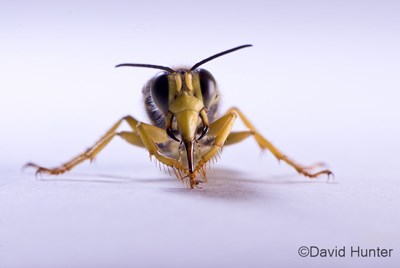
D. Hunter 2011 Hymenoptera BioBlitz (Wasps, Bees, and Ants)Great Basin National Park held its third annual BioBlitz August 1-3, 2011. This short-term, biodiversity event helped the park add to its list of Hymenoptera (wasps, bees, and ants). It also provided an excellent venue for sharing the importance of insects with park visitors, staff, and volunteers. During a 48-hour collecting period, over 80 participants collected Hymenoptera by various methods. Some used nets to sweep vegetation, forceps to pick up ants, bowl traps with soapy water to attract bees, or light and malaise traps to catch a variety of species. BioBlitz participants filled out data sheets to indicate the location, habitat, and collecting method. Everything was brought back to BioBlitz headquarters, where data was entered into a computer and entomologists began sorting samples. 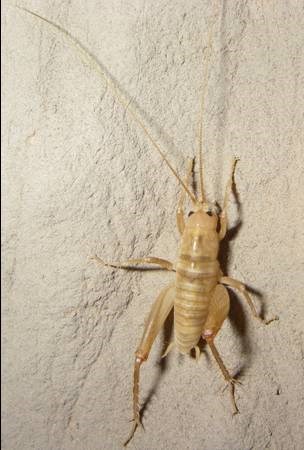
NPS Photo 2010 Orthoptera BioBlitz (Grasshoppers and Crickets)On June 26th and 27th, 2010, Great Basin National Park held its second annual BioBlitz, a short-term event to help discover the biodiversity of the park. For 2010, the BioBlitz focus was on Orthopteroids: crickets, grasshoppers, and related insects. The park previously had no documented species for orthopteroids. Twenty-four people attended, including representatives from the Nevada Department of Agriculture; Dixie State College in St. George, Utah; Southern Utah University in Cedar City, Utah; Utah Department of Natural Resources; and the Forest Service Forest Health Laboratory in Ogden. Volunteers also came from California, Oregon, Utah, and Nevada to assist. Attendees spent 275 hours during the weekend to help inventory the park. During the 24-hour collecting period, approximately 150 orthopteroids were collected, roughly half of them adults. Dr. Andrew Barnum from Dixie State College provided identification of the specimens collected. Due to his expertise with orthopteroids, he was able to identify over 40 specimens at the event, providing nine species names and two family names. He will be undertaking further analysis of the specimens at his lab. About 40 percent of the adult orthopteroids were speckle-winged rangeland grasshoppers (Arphia conspersa), found from 6,800 to 9,200 feet elevation. Habitat was searched from 5,300 to 11,900 feet for orthopteroids, with the bulk of those caught between 5,300 and 8,500 feet. One species was only found over 10,000 feet elevation. Habitat data was collected at the same time as the orthopteroids, which will allow for further analysis about which conditions are most favorable to them. The park would like to extend special thanks to Dr. Barnum for dedicating his time to help the park develop a baseline list of Orthopteroids. The Southern Utah University entomology club and Nevada Department of Agriculture provided field equipment for the event. 
NPS Photo 2009 Coleoptera BioBlitz (Beetles)September 11-13th, Great Basin National Park hosted its first annual BioBlitz, focusing on beetles (order Coleoptera). Participants came from Southern Utah University in Cedar City, Dixie State College in St. George, Utah, University of Nevada-Reno, University of Nevada-Las Vegas, the Nevada Department of Agriculture, and park visitors and staff who wanted to learn more about beetles. Altogether, more than 40 people assisted with the BioBlitz, with over half taking this opportunity to visit the park for the first time. |
Last updated: December 21, 2025
